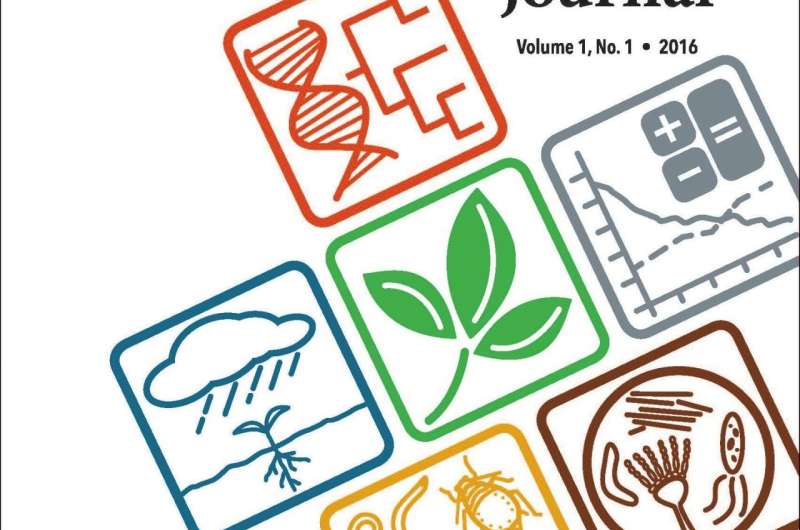Novel transdisciplinary study uncovers microbes that may one day deter major grape disease

To date, scientists are increasingly studying the structure of microbial communities and their composition associated with plants, but few have been doing so in the context of vascular diseases.
Such studies, though, can have a big impact on protecting crops through the development of bioinoculants and biopesticides—particularly for woody crops like grapes, which are generally associated with heavier chemical pesticide use.
This is particularly true for a bacterial pathogen named Xylella fastidiosa. When it multiplies in the stems of grapes and other woody crops, it impairs the movement of water and nutrients within the plant. This phenomenon, identified as Pierce's disease, is a well-known and economically important issue in the wine, raisin and table grape industries in California.
Pierce's disease has no cure and can kill vines in as little as two years. Finding a natural microbial deterrent to X. fastidiosa, the pathogen that causes Pierce's disease, can have a tremendous positive impact for grape growers and on the environment.
Enter Ph.D candidate. Elizabeth Deyett, Drs. M. Caroline Roper, Philippe E. Rolshausen, and several other researchers at the University of California-Riverside (UCR). They studied the microbial communities in grapevines and their connections with Pierce's disease of grape.
They used next-generation sequencing and modern bioinformatics tools to characterize the bacterial and fungal microbiomes living in the grapevines. They analyzed vine samples with mild symptoms of Pierce's disease, samples with severe symptoms, and finally samples that showed no symptoms at all.
Results showed that that the microbial communities inside the grapevines studied were mainly composed of bacteria and fungi—particularly Proteobacteria and Ascomycota—with Pseudomonodales and Pleosporales, respectively, as the main bacterial and fungal orders.
Their data also suggested that the clustering of bacterial communities appeared to be driven by the abundance of the bacterium Pseudomonas fluorescens and X. fastidiosa.
"Interestingly, we found that when the Pseudomonas and Achromobacter species were present, Xylella fastidiosa was in lower abundance, and Pierce's disease symptoms were less severe," said Rolshausen. "This suggests that these organisms may contribute to vine health and have potential use as beneficial microbes that either promote plant health or directly compete with the pathogen."
"This research is highly interdisciplinary, involving microbiology, microbial ecology, plant pathology and bioinformatics. And through this research, we are just now beginning to understand what microbes are there," said Rolshausen. "This inspires us and hopefully others to begin understanding the function of these resident microbiota."
More information: Elizabeth Deyett et al, Microbial Landscape of the Grapevine Endosphere in the Context of Pierce's Disease, Phytobiomes (2017). DOI: 10.1094/PBIOMES-08-17-0033-R
Provided by American Phytopathological Society




















